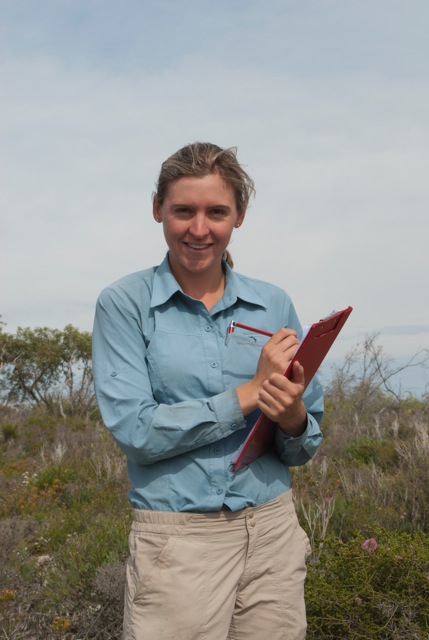
Amity Williams, Murdoch University
Received the Australian Flora Foundation Young Scientist Award for her poster at ESA2011, the Ecological Society of Australia Conference on 21-25 November, 2011: Wrest Point, Hobart, Tasmania.
The southwest of Australia is a global biodiversity hotspot with high levels of plant species richness and endemism. Kwongan vegetation makes up part of this high diversity area and is dominated by woody shrub species. This study aims to examine the effects of changing climate on the northern sandplain kwongan of southwest Australia, specifically, the effects of changes in rainfall and temperature on the demography of key sandplain shrub species of different plant functional types. To achieve this, rainout shelters have been established to create a drought treatment by reducing rainfall, and this intercepted rainfall is being used to then create an increased rainfall treatment using gravity fed irrigation. Open top temperature chambers are being used to create an increased temperature treatment. The treatments are being applied to contrasting topo-edaphic locations: dune tops and swales, in newly burnt and unburnt sites, allowing comparison of effect between mature phase and regeneration phase vegetation.
The focus species are shrubs Banksia attenuata and Banksia hookeriana (resprouter and non-sprouter respectively) and sub-shrubs Melaleuca leuropoma and Beaufortia elegans (resprouter and non-sprouter respectively). Hypotheses include (1) decreased rainfall and increased temperature will cause a decrease in growth, survival and reproduction (2) increased rainfall will cause an increase in growth survival and reproduction (3) effects will be expressed stronger in seedlings (regeneration phase) than mature plants and (4) changes in demography will vary according to plant functional type. The results after one year show an overall decrease in growth, survival and reproduction in woody species subjected to decreased rainfall and increased temperature. They also show that reproduction in resprouting species is being impacted more severely than in non-sprouting species. The results over the next few years are expected to show further treatment effects of the same nature, and other additional effects as the time scale of the treatment effects lengthens.
